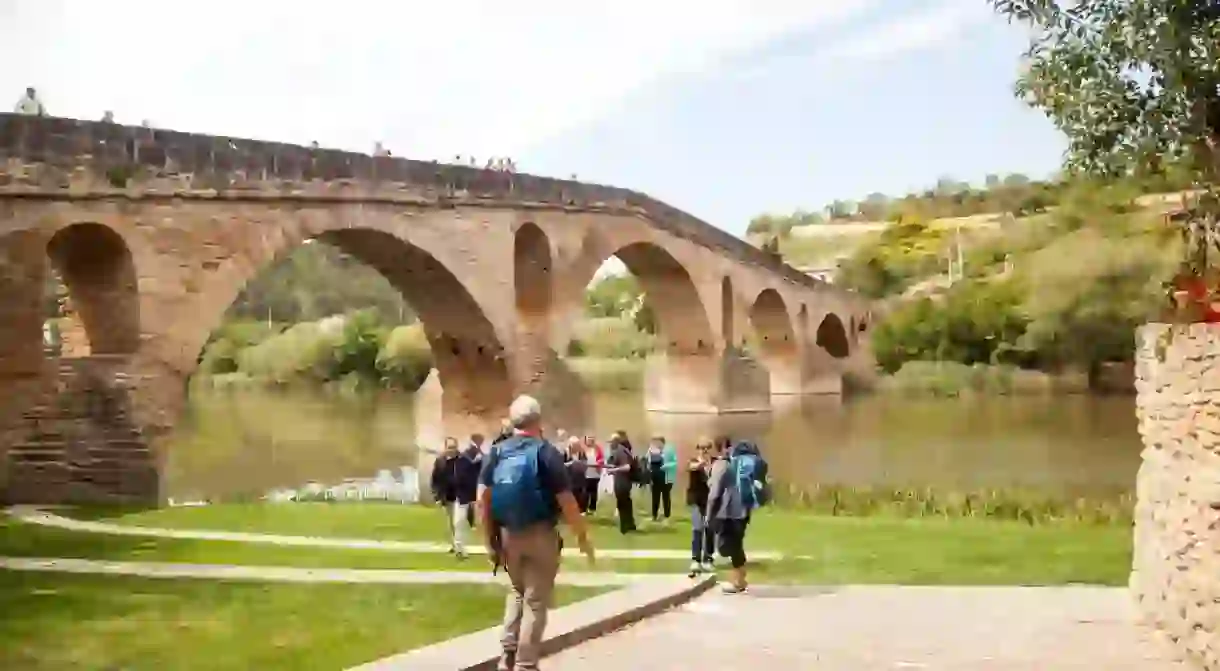These Stunning Villages Along the Camino De Santiago, Spain Will Take Your Breath Away

The Camino de Santiago, often referred to simply as “the Camino,” is a centuries-old pilgrimage route that has stollen the hearts and spirits of travelers from all over the world. Along this remarkable journey, pilgrims not only find spiritual enlightenment but also discover the charm and character of the amazing villages lie along the road. Take a look at these stunning villages located along Spain’s famous pilgrim route, the Camino de Santiago, also known as the French Way. These places are sure to take your breath away.
Did you know – Culture Trip now does bookable, small-group trips? Pick from authentic, immersive Epic Trips, compact and action-packed Mini Trips and sparkling, expansive Sailing Trips.
Saint Jean Pied de Port

This small town on the French side of the Pyrenees is where many pilgrimages along the Camino de Santiago begin. A pretty southern-French town, it’s characterised by narrow whitewashed houses and steep cobbled streets, bisected by a small winding river and crossed by several footbridges.
Burguete-Auritz
Burgete-Auritz sits just south of Roncesvalles, where many pilgrims begin their Camino trip and where the famous Roncesvalles Collegiate Church is located (which was modelled on the cathedral of Nôtre Dame in Paris). Nestled in the foothills of the Pyrenees, the architecture here looks almost Swiss chalet-like with the pitched roofs and shuttered windows. Besides Pamplona, (and many other Spanish towns and cities) Burguete is also where the author Ernest Hemingway stayed for a while.
Puente de la Reina
Located in the province of Navarra, around 24 kilometres south-west of Pamplona (that’s around a day’s walk for pilgrims), the Camino de Santiago runs right through the centre of the village. Here the route is an old cobbled street flanked by quaint townhouses and pint-sized tapas bars. Puente de la Reina literally means ‘Bridge of the Queen’, and its arched stone walkway over the River Arga is truly the queen of northern Spain’s bridges.
Estella

Continue another day’s walk (approximately 21 kilometres) west of Puente de la Reina and you’ll come to Estella, referred to as ‘La Bella’ in medieval times because of the beauty of its architecture. Surrounded by rolling hills, its stand-out feature is the 12th century Church of San Pedro de la Rúa – the oldest and the largest in the town. Other noteworthy structures are the Church of San Miguel Arcángel (pictured), the Church of Santo Sepulcro and the Puerta de Castilla – the old entranceway to the town.
Nájera
Enter the region of La Rioja with its golden vineyards and magnificent honey-hued monasteries. After the buzzing nightlife and excellent tapas bars of Logroño, Nájera is a relaxing and peaceful spot, sat right along the River Najerilla and backed by verdant green hills.
Santo Domingo de la Calzada

Another day’s walk (approximately 20 kilometres) west along the Camino, you’ll come to Santo Domingo de la Calzada, founded in 1044 to provide shelter for the pilgrims who travelled it. Criss-crossed by narrow medieval streets, it’s surrounded by old city walls and houses both a cathedral and a pilgrim’s hospital, which is now a hotel. From here, it’s just a short hop south, to two of northern Spain’s most famous monasteries – the UNESCO World Heritage Monasterio de San Millán de Yuso and Suso.
Castrojeriz
You can see the village of Castrojeriz for miles before you approach it, across the gold and green fields of La Meseta – one of the most gruelling parts of the Camino, the vast central plateau between the cities of Burgos and León. Biscuit-coloured domes and roofs greet you as you enter, and the castle looks down at you from the top of the hill. As well as being one of the best looking, Castrojeriz is also one of the friendliest towns along the Camino.
Villafranca del Bierzo

Just past the city of Ponferrada on the edge of Castilla y León, you’ll reach the town of Villafranca del Bierzo, one of the most important towns along the Camino in the region. Its grand monuments and elegant mansions down the Calle del Agua have earned it the heritage status of Property of Cultural Interest. It’s also just a short journey south of here to reach the historic Roman mining site of Las Médulas.
O Cebreiro

Right on the border of Castilla y León and Galicia, high up in the mountains and often shrouded in mist, sits the historic village of O Cebreiro. The village is home to several pallozas, ancient stone roundhouses with thatched roofs, one of which has been turned into a small ethnographical museum. It also has a pretty pre-Romanesque church and a couple of rustic restaurants, serving giant steaks.
Portomarín

Portomarín sits on the edge of the Belesar Resevoir, almost in the centre of the region of Galicia. Unlike the other towns along the Camino mentioned on this list, it is not historic, in fact most of the town was built in the 20th century. What makes it so interesting however, is that in the 1950s Franco decided to built a hydro-electric dam, which would flood the entire town. The villagers decided to try and save just one building – their church – and so rebuilt it further up the bank stone by stone. On some days you can still see the structures of the old town poking up from beneath the water below.
Arzúa
The tiny Galician village of Azúra is just 38 kilometres from Santiago de Compostela and the end of the Camino – just a two-day walk away. Pilgrims enter this cute village via a stone bridge over the river and find a typical Galician farming community.
Need more Camino inspiration? Read our Top Tips for Walking the Camino de Santiago.













